Zendesk Pricing, Finally Explained
Zendesk pricing is super complicated with its plans and overpriced hidden features. We decided to figure it out once and for all.
Written by Tetiana Shataieva

Zendesk is a veteran in the field of customer service software. Founded over 10 years ago as a help desk tool, it used to be one of the best solutions for ticket management. It’s still a choice for some huge enterprises, but it is not that good for small and medium-sized businesses.
So, what’s the problem with Zendesk customer relationship tools? In short, it’s old-tech, too expensive, doesn’t always meet customer expectations, and has poor support. Those entrepreneurs who realize this, start searching for other solutions. Consequently, the interest in Zendesk has been shaking since the summer of 2020 and today.
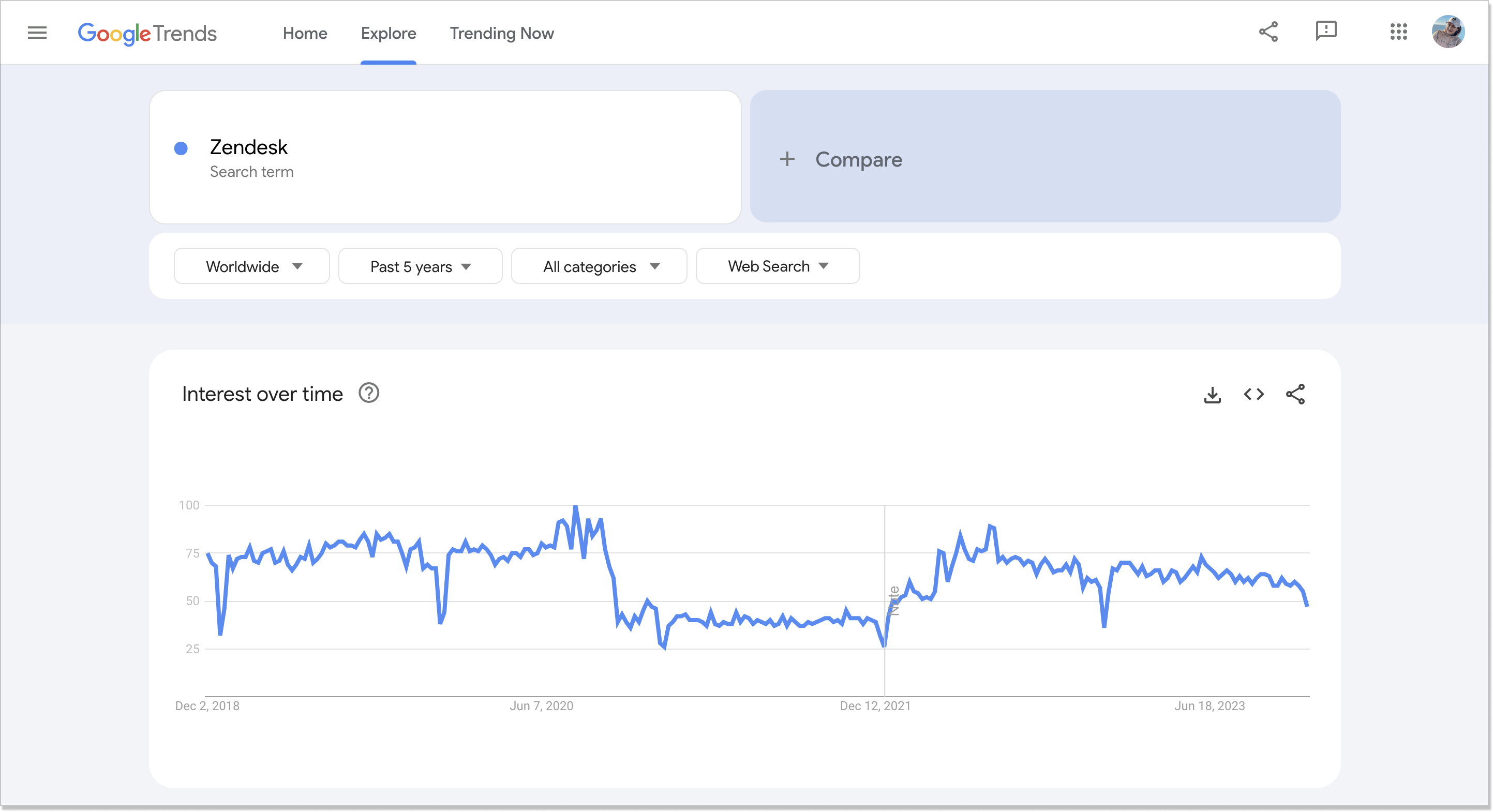
Google Trends tool shows how the interest for Zendesk in Web Search has been steadily falling since 2020.
As of now, the market offers plenty of Zendesk alternatives with a much more fluent interface, lower prices, and a bunch of additional features. For instance, the HelpCruch pricing plans start from just $15/mo for live chat, knowledge base, and full customization.
Zendesk features
The top Zendesk feature is the ticketing system aka help desk software, built to help enterprises handle a wide range of tickets for inquiries. It’s a pretty helpful tool for brands with many communication channels like email, phone, social media, or chat. Each customer request represents ticket forms and enters a queue.
I bet you can guess the next feature. Take a hint. What’s the most essential function of customer service? Live chat that enables real-time talks with users. Zendesk thought alike and acquired Zopim live chat software in 2014 (which made it an even more lucrative ecommerce customer service solution).
Even though ticketing and messaging are top Zendesk features, it offers several other functionalities:
- Zendesk Advanced AI tools
- Knowledge base
- Customer call service
- Issue tracking (the feature tracks customer activity that is closely related to an inbox)
- Community forums
- Answer Bot and other paid add-ons
What do the reviews say?
In my attempt to be objective, I went through a wide variety of Zendesk customer feedback on G2 and Capterra. What I learned is that people certainly love the platform’s ticketing system and how easy it is to classify, assign, and search for tickets. Also, users definitely appreciate the integration of Zendesk with multiple communication platforms and its extensive range of features.
But what do most users complain about? Here are my main insights.
- Old-tech. Built many years ago, the tool keeps working on the same old software developments. That’s why Zendesk’s user interface might look a bit creaky and outdated.
- Too expensive. The basic subscription plan for an all-in-one suite starts from $69 per agent/month. No doubt, Zendesk offers rich functionality that huge companies can benefit from. But for SMBs, the prices are just too high.
- Poor customer support. Surprisingly, Zendesk receives the lowest rate for support. How come? It’s supposed to be their superpower. And still, people in their customer base massively complain about not being able to get assistance immediately. Instead, they have to wait days if not months. Maybe, it should not surprise us. After all, for huge companies like Zendesk with thousands of users, customers often become numbers.
- Too complex to use. Operating the tool requires you to constantly open new windows tabs and move from one to another. Currently, if one needs to open Chat, they have to navigate away from Zendesk Support to open the Chat Application and so forth. Setting up and mastering the tool is also a challenge for people who don’t have significant experience with similar platforms.
While it’s great to have access to the rich functionality, above all, the customer communication platform should be comprehensible and easy to use. The tool is supposed to help in your work, not complicate it. Here is one of the individual customer profiles Zendesk provides along with the Agent workspace:
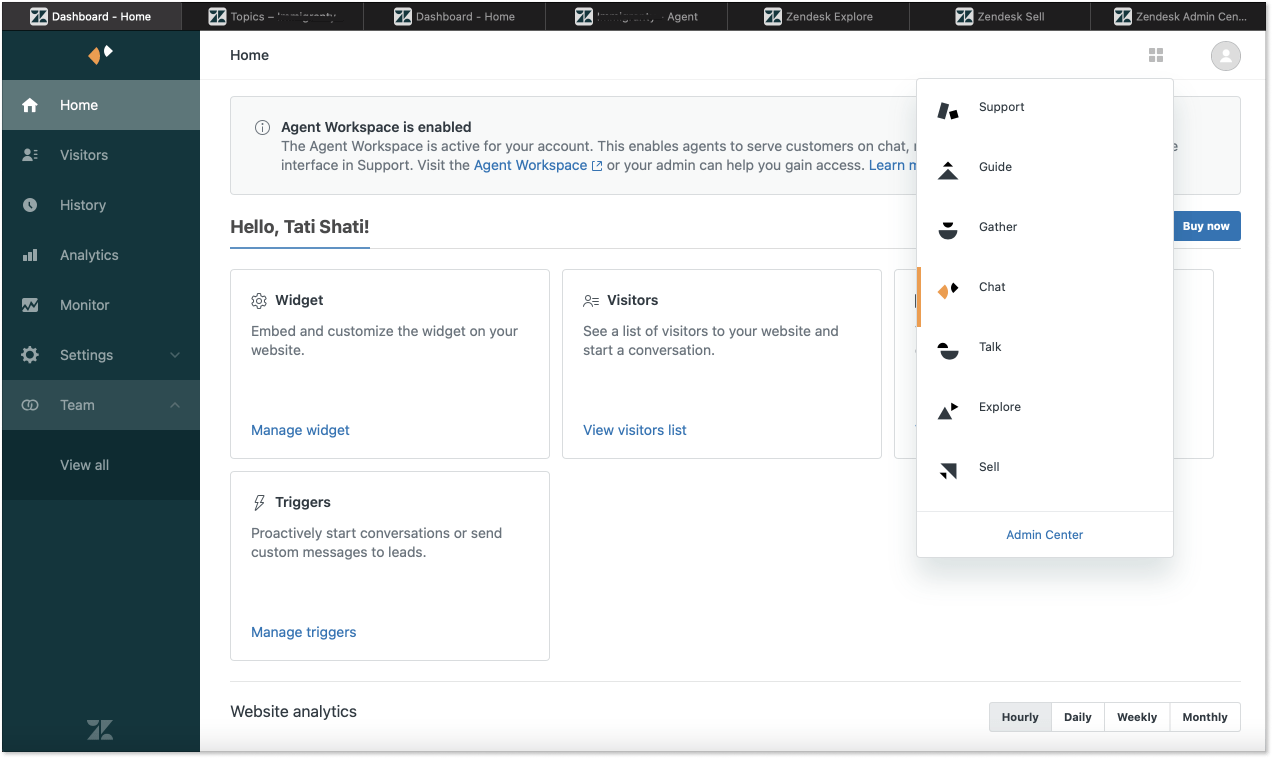
Zendesk pricing plans
Until recently, the company provided about 20 subscription options, including the opportunity to buy each product (chat, knowledge base, phone support, and whatnot) separately or in a mixed package. There were at least eight plans within the “Support” section. Needless to say how overwhelmed customers felt about it.
Moreover, the company has quite an irritating tendency to hide the most essential functionality under more expensive plans. They lure customers with supposedly low prices, and then it turns out that ‘operating hours’, ‘widget unbranding’, or ‘customer satisfaction rate’ are nowhere to be found. TechCrunch even hinted that the platform is using a ‘bait and switch’ tactic.
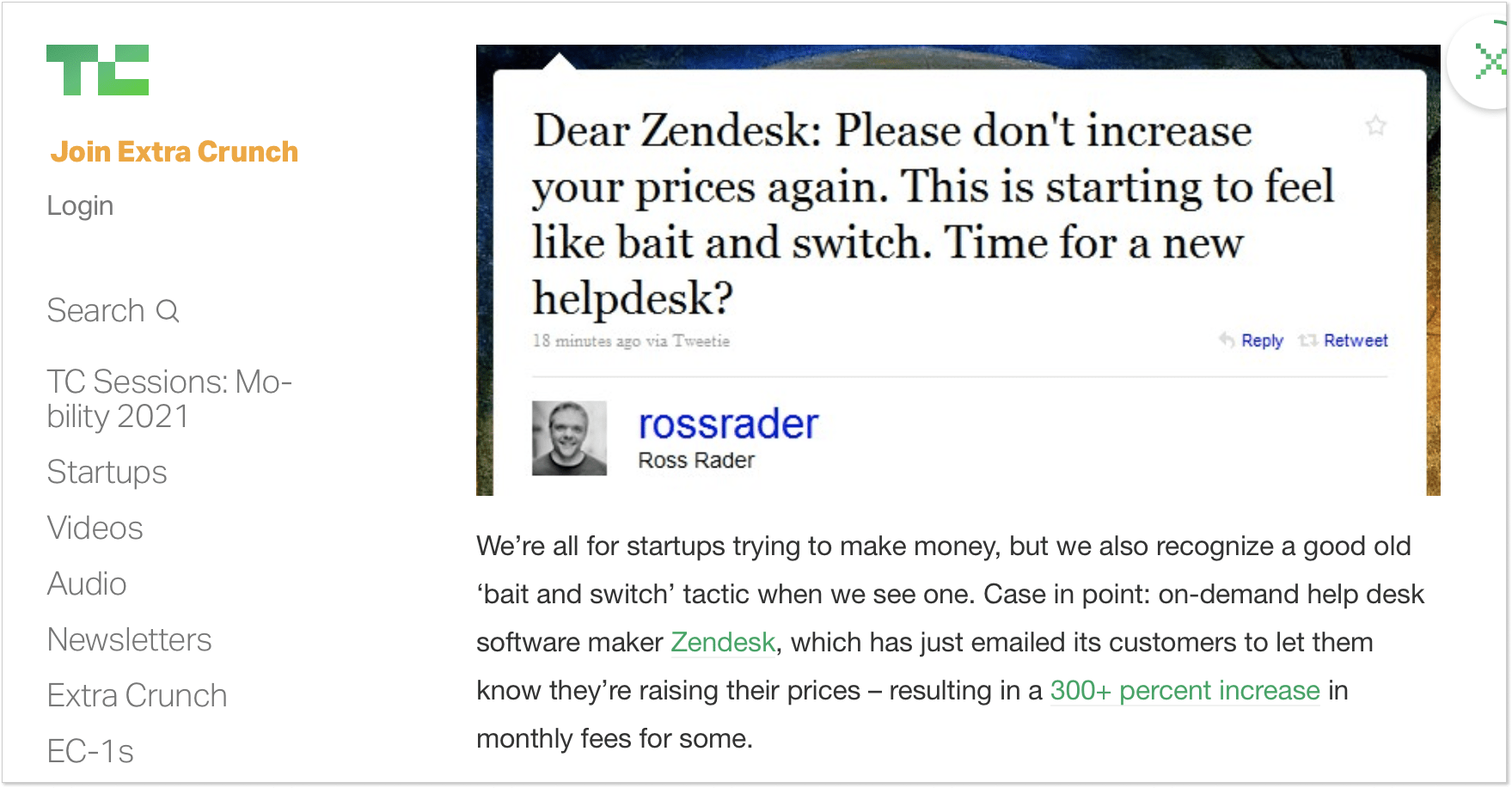
A few years ago Zendesk announced their ‘radically simple’ solution – Zendesk Suite. As for now, there are just 4 plans for service, 3 – for support, and 3 – for sales, and you won’t find any information on the website about subscriptions for separate products. All features are now included in the Suite plans for new customers.
It might sound like good news for bigger companies but not for aspiring entrepreneurs. Before the Zendesk pricing update, users could subscribe to the Light Chat Plan and use a simple live chat tool free of charge. Since February 2021, it’s no longer offered.
So, if you are just building your way up in the business world, it’s hardly the right tool for you at the moment. After all, Zendesk pricing starts from $69 to $219 per agent/mo if billed monthly. Does it fit in your budget?
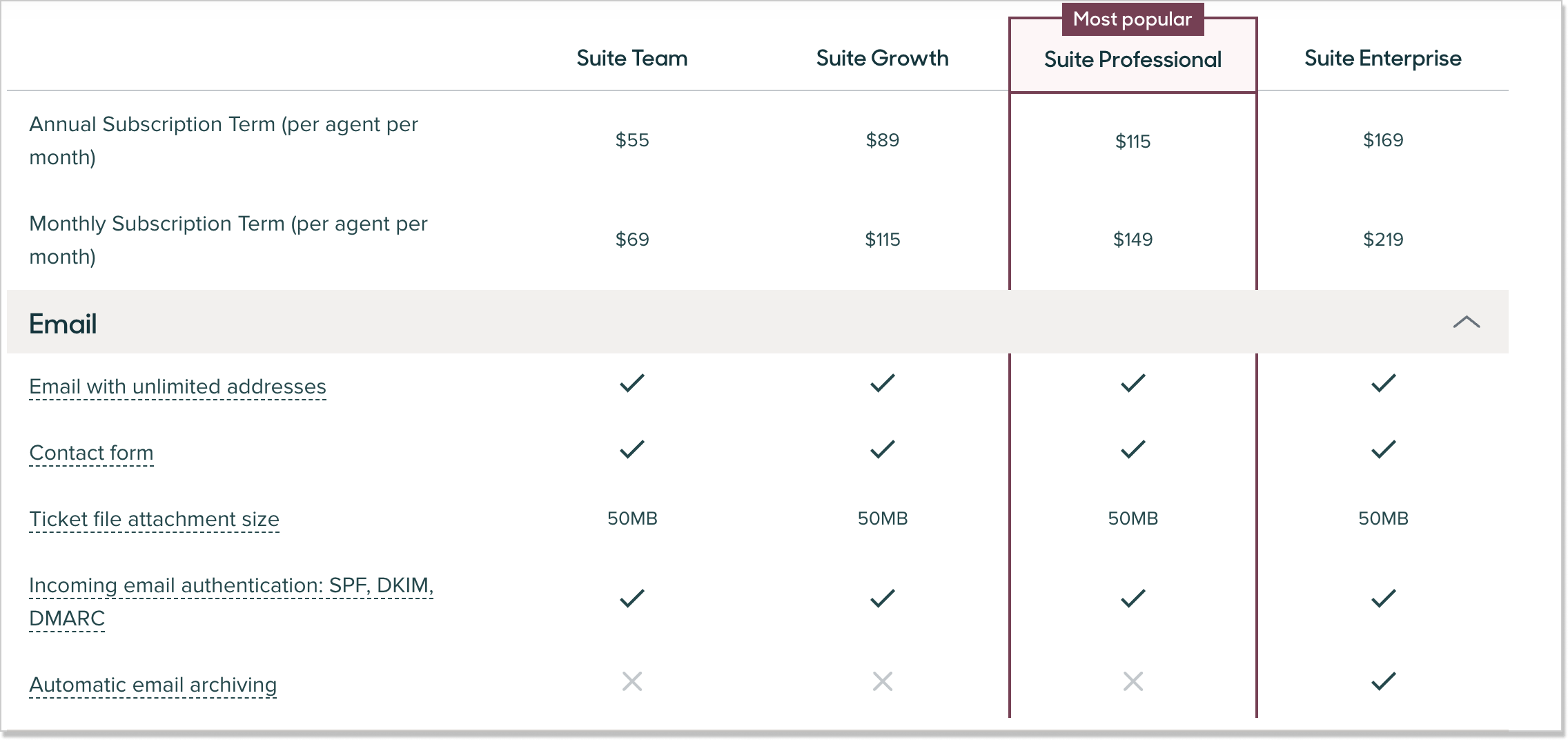
The company also offers a solution every sales representative would love. It enables email marketing and CRM for customer support. Zendesk Sell pricing starts from $25 to $219 per user if billed monthly.
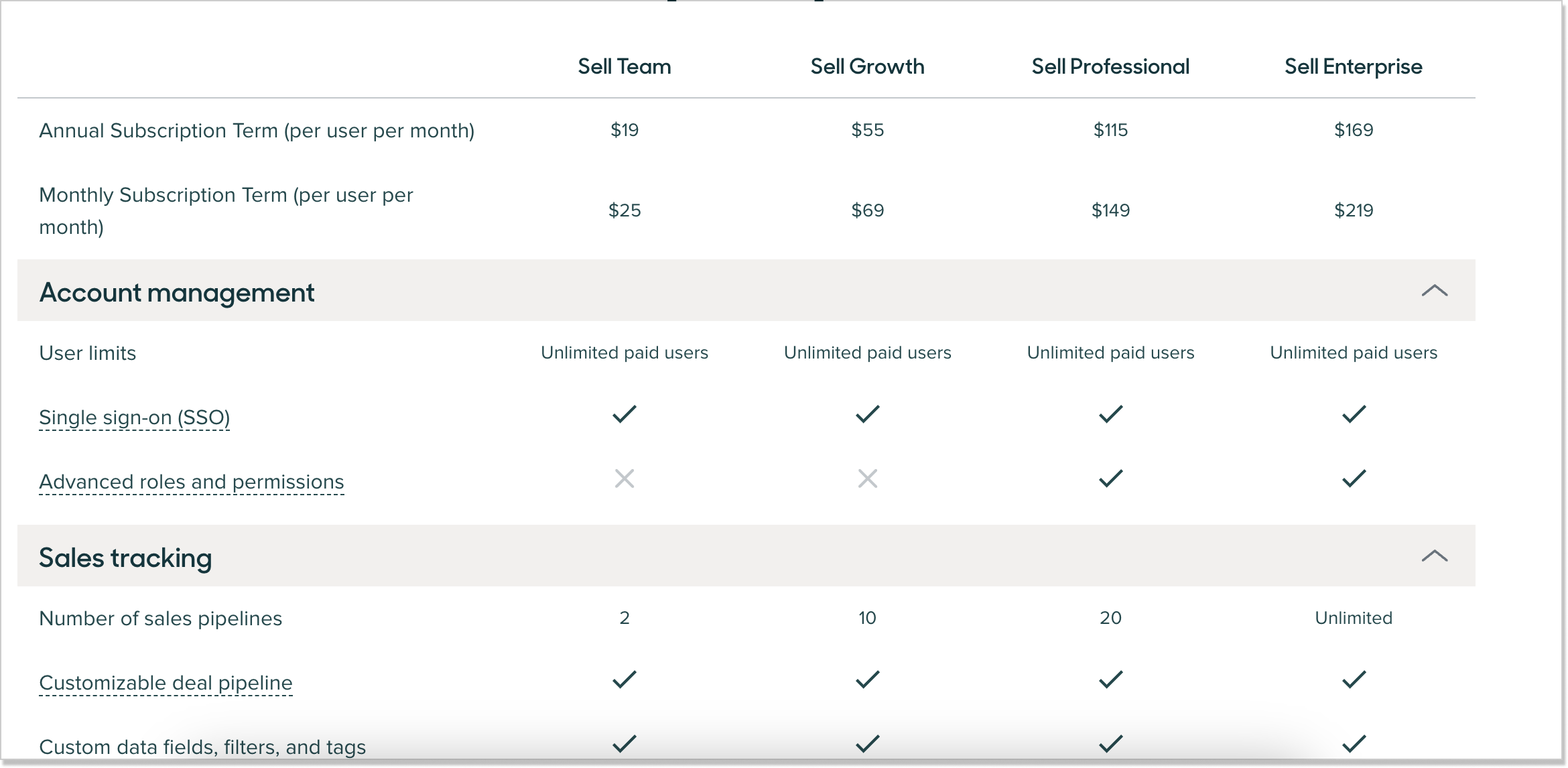
If you are considering other platforms with a similar feature set but more affordable, try comparing Zendesk vs Freshdesk, and choose the best solution for you.
Zendesk pricing examples
Many services for customer support provide dozens of pricing plans and options. Zendesk might be the exception to this rule. The best way to make Zendesk price clear is to break it down into three plain examples.
1. Basic email customer support solution for a small business
Setup:
A small company doesn’t have a full-time agent to provide live customer support yet. So, their goal, for now, is to find a simple solution that allows email ticketing and a web widget.
Zendesk solution:
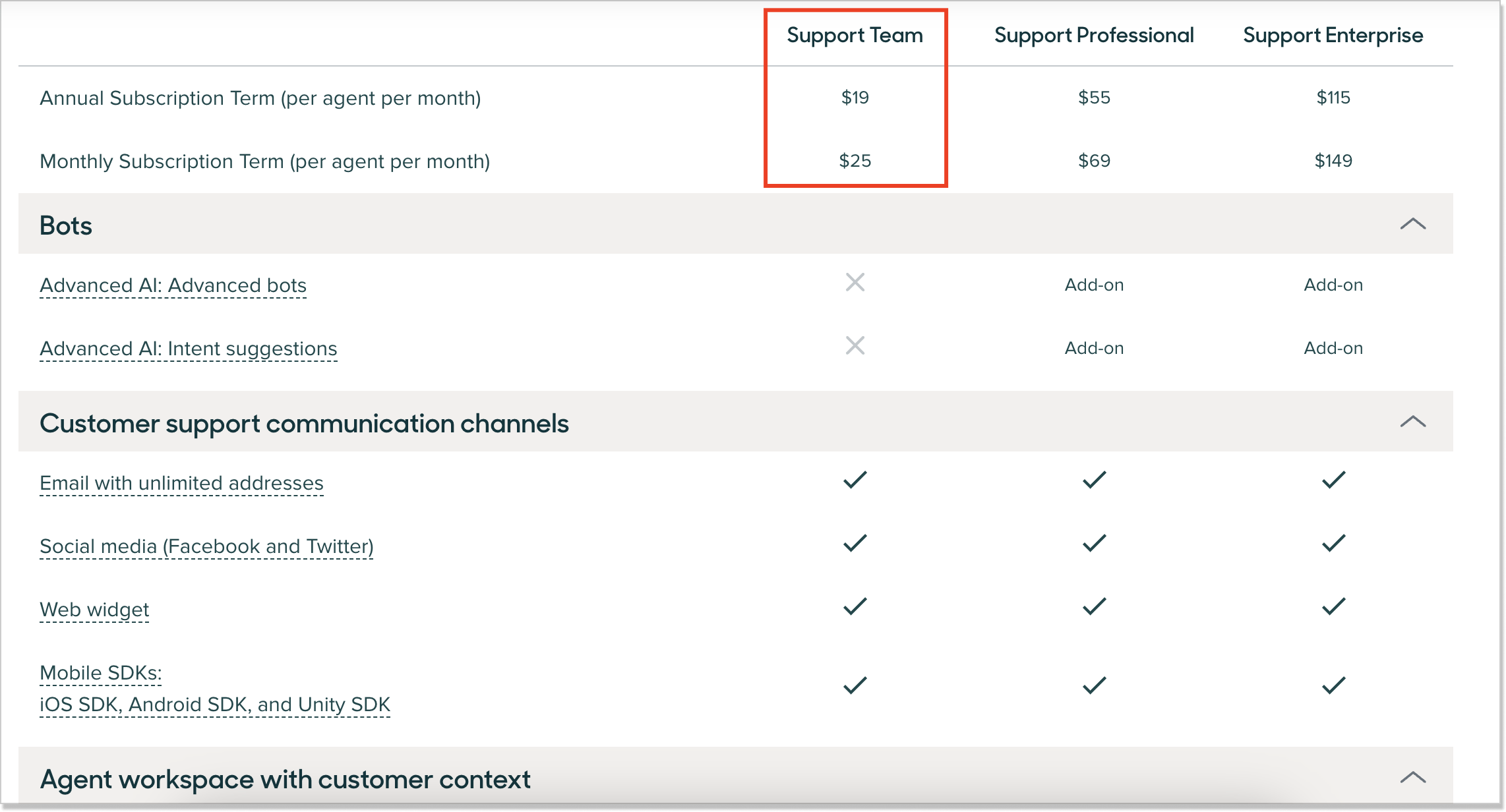
Zendesk Basic Support plan starts from $25 if billed monthly. It encompasses email ticketing, a web widget, an effective customer self-service tool like a knowledge base, and Facebook integration. However, unfortunately, no AI bots are included.
Honestly, offering email support only is not the way prosperous people do business today (say hi to 2007s!). Email response takes hours or even days. Now, customers demand fast real-time assistance, namely, live chat support. It’s easy to imagine that in a few months, the business owner would have to switch to a more expensive plan with live chat and knowledge base at the very least.
Final price:
- $25 if billed monthly for email, widget, and social media integration.
2. Basic customer support solution for a small business
Setup:
A small company with 2 customer support agents. The business owner is just sowing the seeds of their future success. All they need right now is a simple live chat to communicate in person with leads and current customers.
Zendesk solution:

Zendesk plan that includes a live chat starts with the ‘Support Team’ package. It comprises other essential features like a knowledge base, automated answers, and performance reporting (which is part of the Zendesk Explore feature). Although, you won’t have rich customization options and a way to set up operating hours.
And, don’t forget about the business owner who also should be able to enter the agents’ desk, assign tickets or even answer some requests. It means the company would have to pay for three agents’ seats.
Final price:
- $150/mo for 2 agents if billed monthly for live chat and knowledge base.
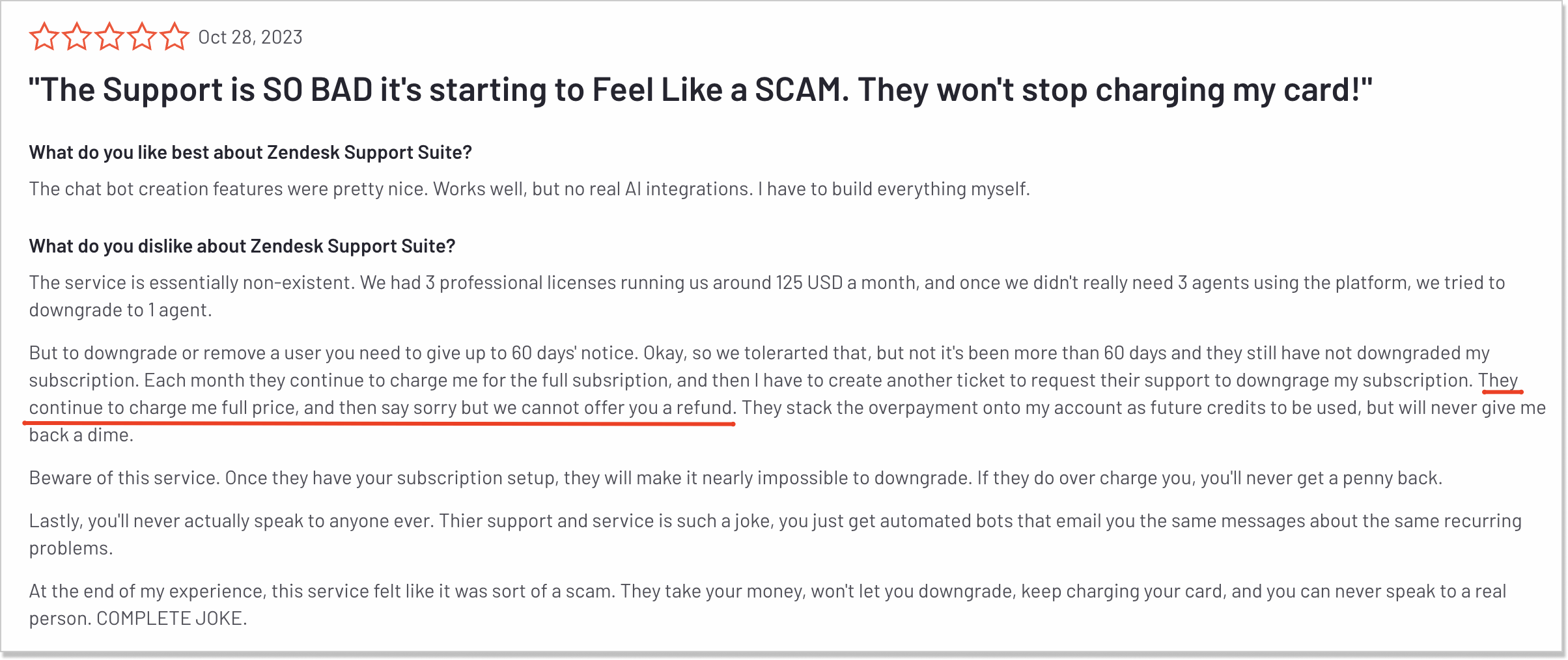
3. Basic solution for customer support in a medium-sized business
Setup:
A medium-sized business with 5 support representatives. The company needs three departments – sales, support, and billing. Also, they are looking for a tool with a knowledge base feature available in the 5 most popular languages. The owner aims to create a community around their brand as another self-service option for customers.
Zendesk solution:

In this case, the best solution is the ‘Zendesk Suite Professional or ‘Zendesk Suite Enterprise’ plan. These subscription plans include all core features the entrepreneur is looking for with unlimited departments and a multilingual knowledge base. Plus, it involves customer lists (a special segment) as a legacy add-on.
However, there is a catch. Even by paying $125 per user per month if billed monthly, the entrepreneur still won’t be able to remove Zendesk branding from their widget or archive emails automatically.
Final pricing options:
- $575/mo for 5 agents if billed monthly for live chat, knowledge base, and customer satisfaction rating.
- $745/mo for 5 agents if billed monthly for live chat, knowledge base, and community forums.
4. Premium all-in-one solution for marketing, support, and sales
Setup:
A prosperous corporation with 10 agents needs a one-stop communication tool with email marketing, support, and sales features. It might be on the lookout for enterprise plans.
Zendesk solution:
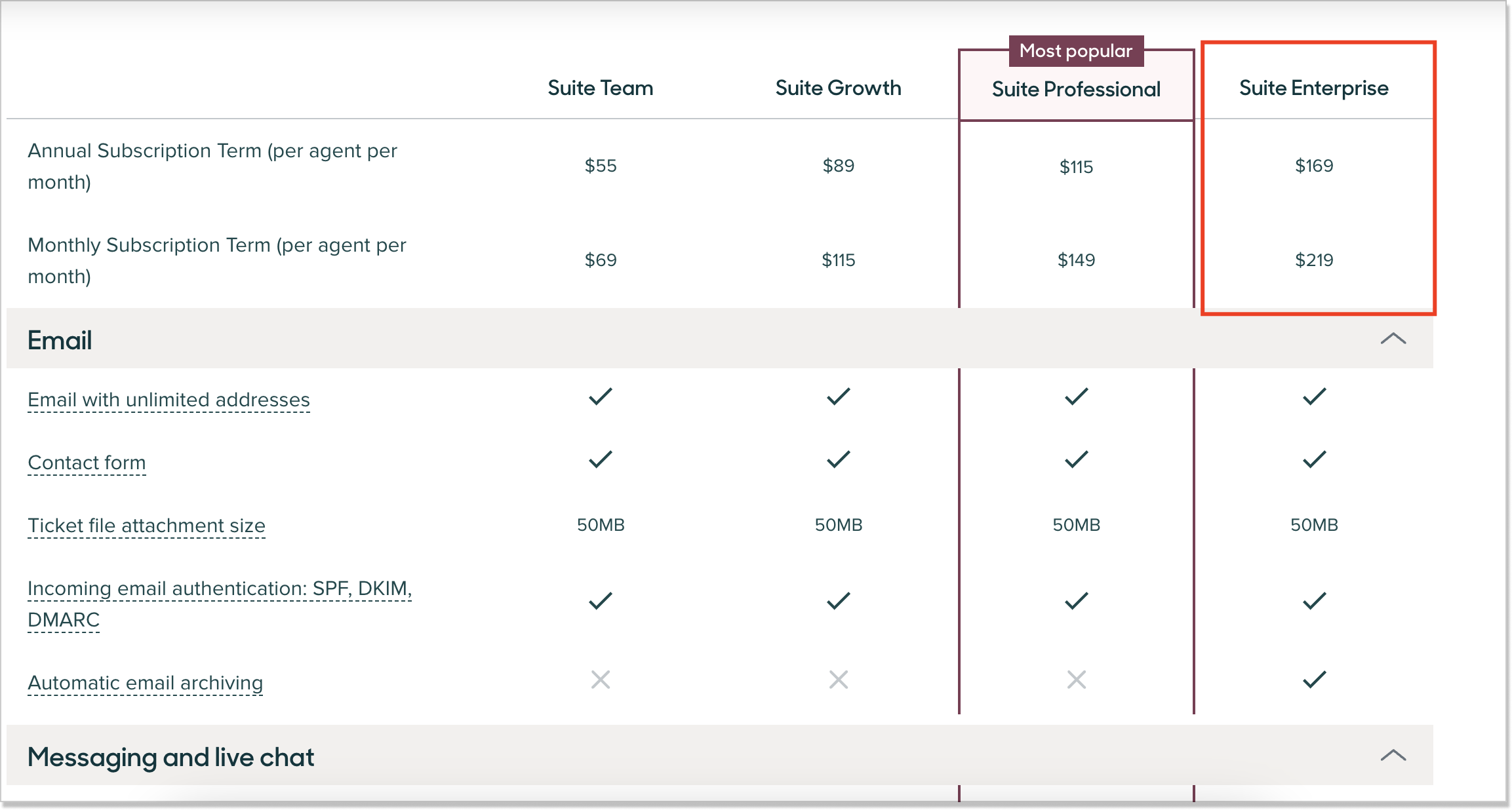
To be honest, the first three plans lack some essential features. Only within the ‘Zendesk Suite Enterprise’ business owners can remove Zendesk branding from their widget. Besides, you can set up contextual workspaces, see audit logs, change and assign custom roles, as well as use custom notifications for emails, messages, etc. if on this plan. They will optimize your workload, without restricting the tools agents need to complete their job.
All in all, by giving up roughly $200 per agent/mo monthly, you get the core elements needed for customer support. The only problem, these features are slightly overpriced. You can get the most essential functionality at lower costs. (I’ll get back to it in a moment).
Meanwhile, if you are looking for a sales solution that goes with email marketing software, you might want to consider ‘Sell Professional, or ‘Sell Enterprise’ which includes premium customer support, unlimited sales pipelines, and advanced sales insight reports.
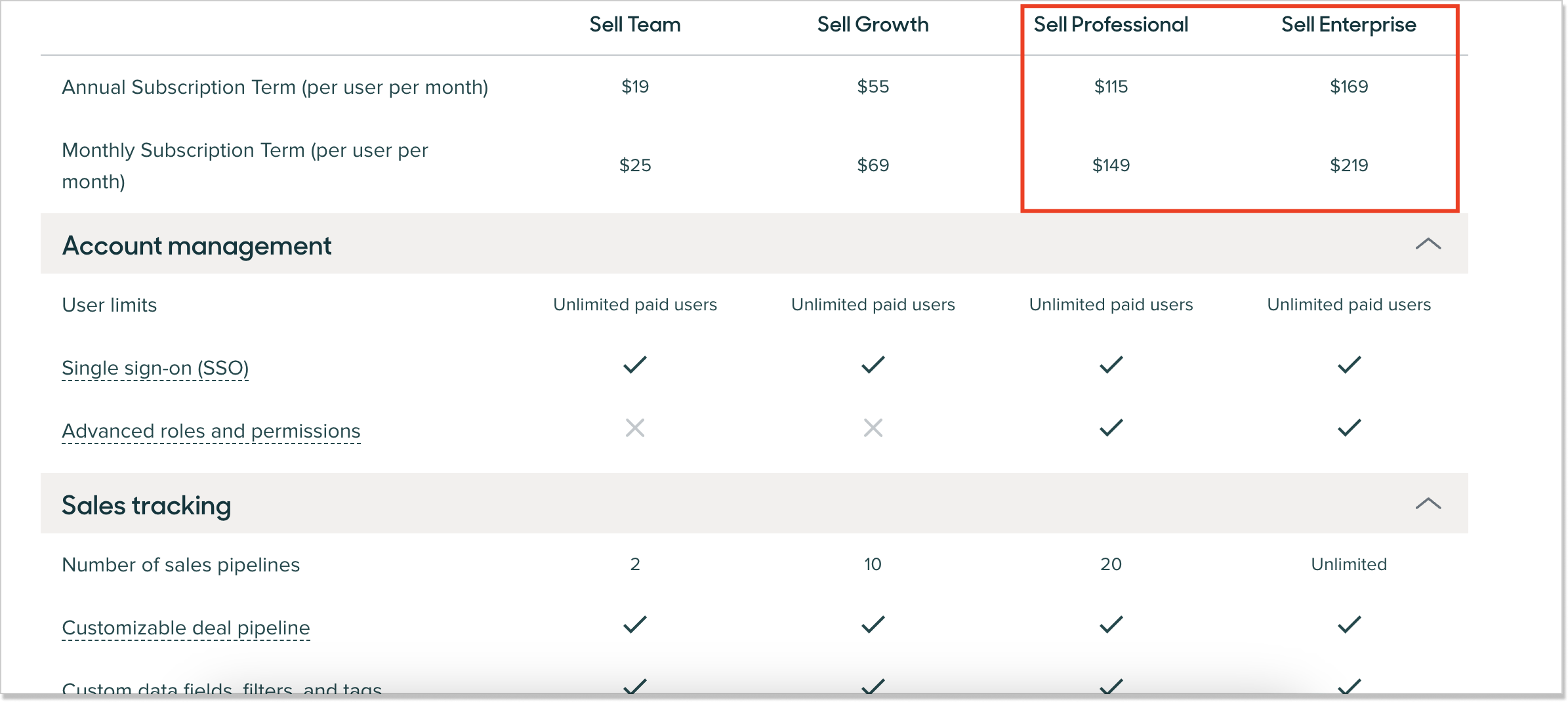
Final price:
- $1,490 for 10 agents if billed monthly for live chat, knowledge base, and widget unbranding.
- $2,190 for 10 agents if billed monthly for ‘Sell Enterprise’ for sales teams with unlimited paid users, personalized emails, activity, performance dashboards, premium customer support, and advanced analytics.
Is it just me or do you, too, feel like those prices for just ten agents are ridiculously high even for an all-in-one customer engagement system?
Zendesk alternatives
When looking at Zendesk pricing plans and fail-safe access to customer support, all these options seem rather expensive for startups and other companies that just paving their way up. In the initial stages, it is important to rationally distribute the budget for the company to keep growing. But who doesn’t want numerous successes with customer service?
Fortunately, there are more than a few Zendesk competitors that are ready to deliver the same core customer offerings – live chat, self-service customer portals, email marketing software – at much lower prices.
HelpCrunch — a one-stop customer service platform
In terms of functionality, HelpCrunch is an affordable and efficient Zendesk alternative on the market today.
This omnichannel customer service platform offers all core elements needed to make clients happy, including an AI-fuelled chatbot feature!
- Live chat that you can customize any way you want even within the Basic plan. In addition, it has a bunch of features like automated messages, pre-chat forms, and chat ratings.
- Shared inbox where messages from live chat, chatbots, email, and social media flow down to one place. It also enables email forwarding, tagging, and live reporting.
- AI-powered chatbot for customer support task automation. It can easily answer FAQs, qualify leads, tag users or assign chats. The bot builder is a well-thought visual editor that makes chatbot creation a breeze.
- Knowledge base with an AI WYSIWYG (‘what you see is what you get’) Editor for customer self-service and built-in SEO features.
- Email marketing with automated trigger-based and manual campaigns, follow-ups, and a powerful editor.
- Popups for effective marketing and sales strategy. It’ll help you engage more leads.
There are just three HelpCrunch pricing options, and each of them includes something of the AI stack. No additional cost applies.
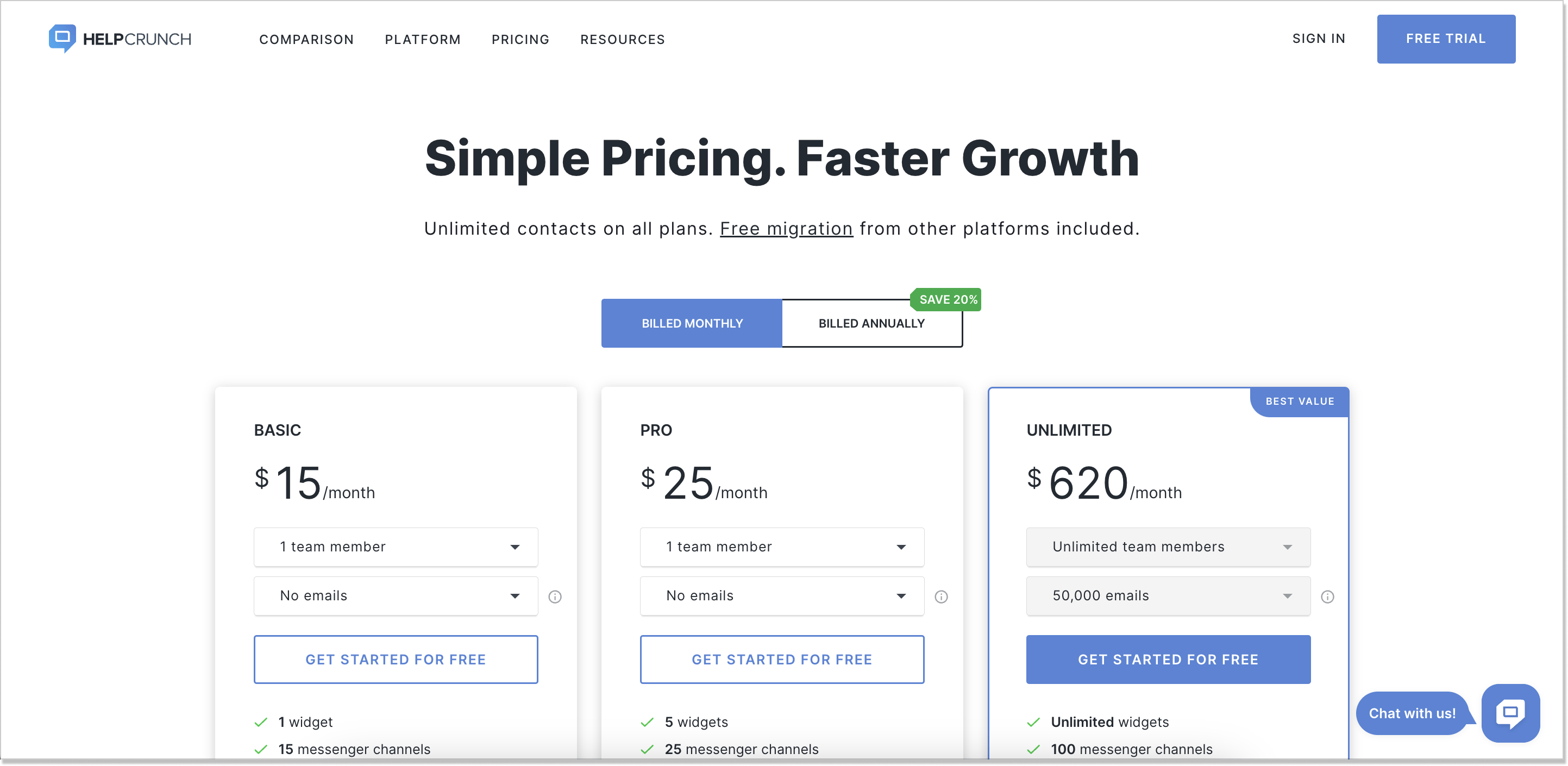
The ‘Basic’ pricing plan is only $15 per agent/per month if billed monthly. For this price, you’ll get a live chat, an AI editor in the knowledge base, a shared inbox, unlimited contacts, and full customization. All tools are essential for the best customer support experience.
If you’re looking for a premium option for customer service that could cover marketing, support, sales, and a chatbot, it’s better to go with the ‘Pro’ subscription, which costs $25/mo/team member if billed monthly. For those who need email marketing functionality, there is an opportunity to buy emails.
Thus, the monthly cost for a 10-member team is only $250/mo in total. It’s a good deal compared to the $1,250/mo for Zendesk.
If you want to go all in, you’d better select our Unlimited package for $620/month if billed monthly. It comes with unlimited contacts, AI Editor requests, and chatbot flows, to name just a few.
Also, there are other competitors of Zendesk like Intercom or Freshdesk, for instance. Each platform has its pros and cons. Think twice and then choose the best solution that suits your current needs.
Bottom line
Zendesk pricing plans are somewhat complicated, and choosing the right one for your business might be a big challenge. Paying the invoices is even bigger. Despite that, Zendesk is a great tool. But so is HelpCrunch.
The only difference is that with HelpCrunch, you don’t have to overpay for the must-have customer support features. Don’t be one of those typical customers who jump at the first option possible. Before committing to anything with the tool in question, just sign up for a free 14-day trial, and give it a try.





